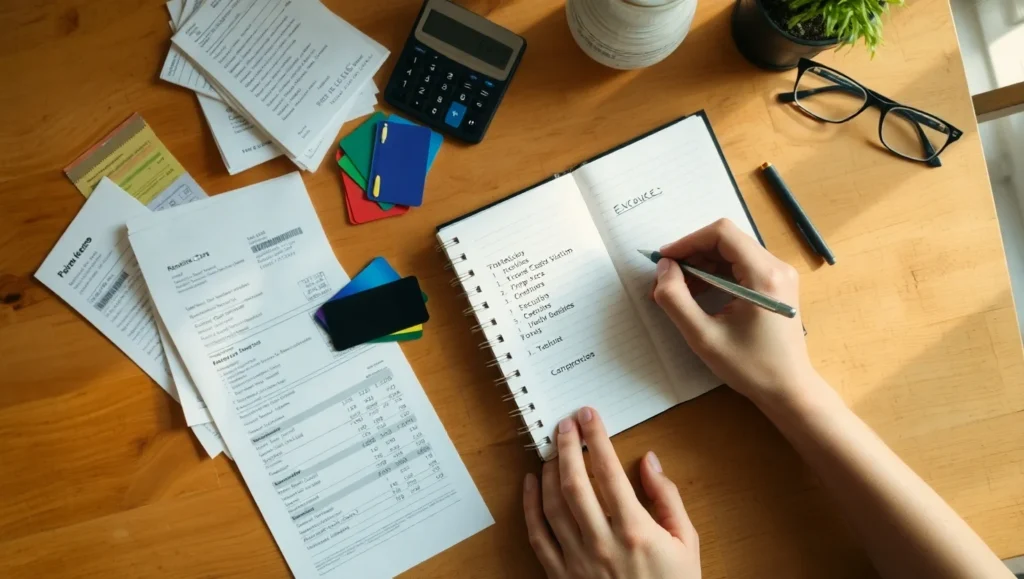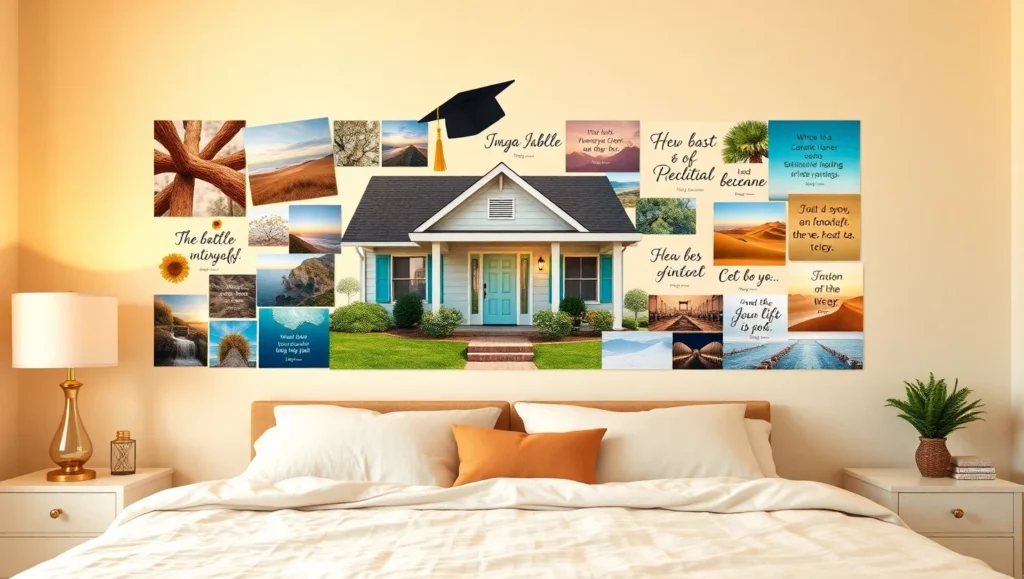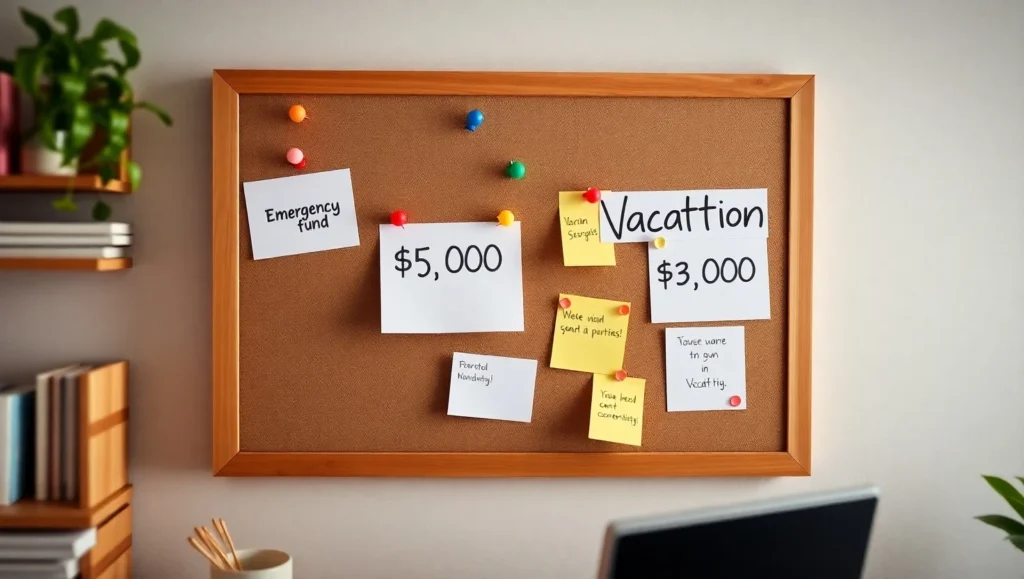Table of Contents
Introduction – 5 Amazing Steps to Create and Stick to a Budget
5 Amazing Steps to Create and Stick to a Budget – Are you tired of living paycheck to paycheck, constantly worrying about your financial future? 💸 You’re not alone. Many people struggle to manage their money effectively, but there’s hope on the horizon. Creating and sticking to a budget could be the game-changer you’ve been looking for!
Imagine a life where you’re in control of your finances, confidently working towards your dreams, and building a secure future. 🌟 It’s not just a fantasy – it’s entirely possible with the right approach. By following our 5 amazing steps, you’ll transform your financial landscape and pave the way for a brighter tomorrow.
In this blog post, we’ll guide you through the process of assessing your current situation, setting clear goals, creating a realistic budget plan, implementing money-saving strategies, and staying motivated on your journey to financial freedom. Are you ready to take charge of your finances and create the future you deserve? Let’s dive in!
5 Amazing Steps to Create and Stick to a Budget

Assess Your Current Financial Situation
Track your income sources
To start assessing your financial situation, you need to have a clear picture of your income. Begin by listing all your sources of income, including:
- Primary job salary
- Side hustle earnings
- Investment returns
- Rental income
- Freelance work
- 5 Amazing Steps to Create and Stick to a Budget
Create a table to organize this information:
| Income Source | Amount | Frequency |
|---|---|---|
| Salary | $3000 | Monthly |
| Freelancing | $500 | Monthly |
| Investments | $200 | Quarterly |
List all monthly expenses
Next, you’ll want to catalog all your monthly expenses. This step is crucial for understanding where your money goes. Include fixed costs like rent and variable expenses such as groceries. Don’t forget about less frequent expenses like annual subscriptions.
Identify spending patterns
Now that you have your expenses listed, it’s time to analyze your spending habits. Look for trends in your expenditures:
- Which categories consume the most money?
- Are there any unnecessary or excessive expenses?
- Do you notice any seasonal spending patterns?
- 5 Amazing Steps to Create and Stick to a Budget
This analysis will help you identify areas where you can potentially cut back and save more.
Calculate your net worth
Your net worth is a snapshot of your financial health. To calculate it:
- List all your assets (savings, investments, property)
- Subtract your total liabilities (debts, loans, mortgages)
- 5 Amazing Steps to Create and Stick to a Budget
This figure gives you a baseline for your financial journey. Regularly updating your net worth will help you track your progress towards your financial goals.

Set Clear Financial Goals
Define short-term objectives
Setting clear financial goals is crucial for your budgeting success. Start by defining your short-term objectives, which are typically achievable within 1-3 years. These goals provide immediate motivation and help you build momentum towards your long-term aspirations.
Here are some examples of short-term financial objectives:
- Pay off credit card debt
- Build an emergency fund
- Save for a vacation
- Purchase a new appliance
- Increase your monthly savings by 10%
- 5 Amazing Steps to Create and Stick to a Budget
When defining your short-term objectives, consider the following table:
| Objective | Target Amount | Timeframe | Monthly Savings Required |
|---|---|---|---|
| Emergency Fund | $5,000 | 12 months | $417 |
| Vacation | $3,000 | 18 months | $167 |
| New Laptop | $1,500 | 6 months | $250 |
Establish long-term aspirations
Long-term financial goals typically span 5-10 years or more. These aspirations shape your overall financial strategy and guide your short-term decisions. Examples include:
- Saving for retirement
- Purchasing a home
- Starting a business
- Funding your children’s education
- Achieving financial independence
- 5 Amazing Steps to Create and Stick to a Budget
Make goals SMART (Specific, Measurable, Achievable, Relevant, Time-bound)
To increase your chances of success, ensure your financial goals are SMART:
- Specific: Clearly define what you want to achieve
- Measurable: Quantify your goal to track progress
- Achievable: Set realistic targets based on your income and expenses
- Relevant: Align goals with your values and life priorities
- Time-bound: Set deadlines to create urgency and motivation
- 5 Amazing Steps to Create and Stick to a Budget
By setting clear financial goals using the SMART framework, you’ll have a solid foundation for creating and sticking to your budget. With your objectives in mind, you can now move on to developing a realistic budget plan that aligns with your aspirations.

Create a Realistic Budget Plan
Categorize expenses
To create a realistic budget plan, start by categorizing your expenses. This will help you understand where your money is going and identify areas for potential savings. Here’s a simple table to help you categorize your expenses:
| Essential Expenses | Non-Essential Expenses | Financial Goals |
|---|---|---|
| Rent/Mortgage | Entertainment | Emergency Fund |
| Utilities | Dining Out | Retirement Savings |
| Groceries | Subscriptions | Debt Repayment |
| Transportation | Hobbies | Vacation Fund |
Allocate funds to each category
Once you’ve categorized your expenses, it’s time to allocate funds to each category. Be realistic and honest with yourself about your spending habits. Consider using the following list to guide your allocation process:
- Review your past spending patterns
- Prioritize essential expenses
- Set limits for non-essential spending
- Adjust allocations as needed
- 5 Amazing Steps to Create and Stick to a Budget
Factor in savings and investments
Don’t forget to include savings and investments in your budget plan. Treat them as essential expenses to ensure you’re building a secure financial future.
Use the 50/30/20 rule
The 50/30/20 rule is a simple guideline to help you balance your budget:
- 50% for needs (essential expenses)
- 30% for wants (non-essential expenses)
- 20% for savings and debt repayment
- 5 Amazing Steps to Create and Stick to a Budget
Choose a budgeting method that works for you
Finally, select a budgeting method that suits your lifestyle and financial goals. Some popular options include:
- Zero-based budgeting
- Envelope system
- Digital budgeting apps
- 5 Amazing Steps to Create and Stick to a Budget
Remember, the key to a successful budget is consistency and regular review. Now that you have a solid budget plan in place, let’s explore some effective money-saving strategies to help you stick to your budget and achieve your financial goals.

Implement Money-Saving Strategies
Cut unnecessary expenses
To kickstart your money-saving journey, take a close look at your spending habits. You’ll be surprised how many unnecessary expenses you can eliminate. Start by tracking your expenses for a month, then categorize them into essential and non-essential items. Here’s a simple table to help you identify potential cuts:
| Category | Examples | Potential Savings |
|---|---|---|
| Dining out | Restaurants, cafes | $100-$300/month |
| Subscriptions | Unused streaming services | $20-$50/month |
| Impulse purchases | Unplanned shopping | $50-$200/month |
Find cheaper alternatives
Once you’ve identified areas to cut back, look for more affordable options. You don’t have to sacrifice quality; just be smart about your choices. Consider these strategies:
- Compare prices online before making purchases
- Use coupons and cashback apps
- Buy generic brands instead of name brands
- Shop at thrift stores or during sales
- 5 Amazing Steps to Create and Stick to a Budget
Negotiate bills and subscriptions
Don’t be afraid to haggle! Many service providers are willing to offer discounts to retain customers. Try these tactics:
- Research competitor rates
- Call your providers and ask for better deals
- Mention competitor offers to leverage negotiations
- Be prepared to switch if necessary
- 5 Amazing Steps to Create and Stick to a Budget
Embrace a frugal lifestyle
Adopting a frugal mindset can lead to significant savings over time. Focus on needs rather than wants, and find joy in simple pleasures. Here are some frugal habits to cultivate:
- Cook meals at home instead of eating out
- Use public transportation or carpool
- Enjoy free local events and activities
- Repurpose items instead of buying new ones
- 5 Amazing Steps to Create and Stick to a Budget
By implementing these money-saving strategies, you’ll see your savings grow and your financial stress decrease. Next, we’ll explore how to stay motivated and on track with your budget plan.

Stay Motivated and on Track
Use budgeting apps and tools
In today’s digital age, you have a wealth of budgeting apps and tools at your fingertips to help you stay on track with your financial goals. These tools can make budget management a breeze, allowing you to focus on your progress rather than getting bogged down in spreadsheets.
Here’s a comparison of some popular budgeting apps:
| App Name | Key Features | Cost |
|---|---|---|
| Mint | Automatic categorization, bill reminders | Free |
| YNAB | Zero-based budgeting, goal tracking | $14.99/month |
| Personal Capital | Investment tracking, retirement planning | Free (basic) |
| EveryDollar | Simple interface, customizable categories | Free (basic) |
Review and adjust regularly
Your budget isn’t set in stone. You should review it regularly and make adjustments as needed. Here’s a simple checklist to help you stay on top of your budget:
- Weekly: Track your expenses
- Monthly: Review your spending categories
- Quarterly: Assess your financial goals
- Annually: Evaluate your overall financial health
- 5 Amazing Steps to Create and Stick to a Budget
Celebrate milestones and progress
Don’t forget to pat yourself on the back for your achievements! Celebrating milestones can boost your motivation and reinforce positive financial habits. Consider these ways to reward yourself:
- Treat yourself to a small luxury within your budget
- Share your success with friends or family
- Put a small amount towards a fun savings goal
- 5 Amazing Steps to Create and Stick to a Budget
Surround yourself with supportive people
Your environment plays a crucial role in your financial success. Surround yourself with people who understand and support your budgeting goals. You can:
- Join online communities focused on personal finance
- Share your goals with trusted friends or family members
- Consider finding an accountability partner to keep you motivated
- 5 Amazing Steps to Create and Stick to a Budget
Remember, staying motivated is key to long-term financial success. With the right tools, regular reviews, celebrations, and a supportive network, you’ll be well on your way to achieving your financial goals and securing a brighter future.

Conclusion – 5 Amazing Steps to Create and Stick to a Budget
By following these five steps, you can create a budget that works for you and set yourself up for financial success. Remember, assessing your current situation, setting clear goals, and creating a realistic plan are essential foundations. Implementing money-saving strategies and staying motivated will help you stick to your budget long-term.
Your financial future is in your hands. Take control today by putting these steps into action. With dedication and consistency, you’ll be amazed at how quickly you can transform your financial landscape and move closer to achieving your dreams. Start your journey towards a brighter financial future now!
5 Amazing Steps to Create and Stick to a Budget
Frequently Asked Questions (FAQ’s) About Budget Planning
Why is assessing your current financial situation important?
It gives you a clear view of your income, expenses, and net worth—essential for building a realistic budget.
How do I track my income sources?
List all sources, including salaries, side hustles, investments, and other earnings in an organized manner.
5 Amazing Steps to Create and Stick to a Budget
What should be included when listing monthly expenses?
Include fixed costs like rent and utilities, as well as variable expenses such as groceries, dining out, and subscriptions.
How can I identify my spending patterns?
Analyze your expense categories to see which areas consume the most money and identify any unnecessary costs.
5 Amazing Steps to Create and Stick to a Budget
What is net worth and why should I calculate it?
Net worth is the difference between your assets and liabilities, serving as a snapshot of your financial health.
How do I set clear financial goals?
Define both short-term and long-term objectives using the SMART framework to ensure they’re specific, measurable, achievable, relevant, and time-bound.
What are some examples of short-term financial goals?
Examples include paying off credit card debt, building an emergency fund, or saving for a vacation.
5 Amazing Steps to Create and Stick to a Budget
What are examples of long-term financial goals?
These might involve saving for retirement, purchasing a home, starting a business, or funding education.
How can I create a realistic budget plan?
Start by categorizing your expenses, allocating funds to each category, and prioritizing both essential costs and savings.
What is the 50/30/20 rule in budgeting?
It recommends spending 50% of your income on needs, 30% on wants, and 20% on savings and debt repayment.
What budgeting methods can I choose from?
Options include zero-based budgeting, the envelope system, or using digital budgeting apps.
5 Amazing Steps to Create and Stick to a Budget
How do I cut unnecessary expenses?
Review your spending habits to identify non-essential costs that you can reduce or eliminate.
What are some money-saving strategies mentioned in the article?
Strategies include comparing prices, using coupons and cashback apps, and negotiating bills.
How can finding cheaper alternatives help?
It allows you to maintain quality while reducing costs, thereby freeing up money for savings.
5 Amazing Steps to Create and Stick to a Budget
What role do budgeting apps play in managing finances?
They automate expense tracking, help categorize spending, and provide insights to keep you on track.
How often should I review and adjust my budget?
Regular reviews—weekly for tracking expenses, monthly for category adjustments, and quarterly or annually for overall progress—are recommended.
How can celebrating milestones boost my budgeting efforts?
Rewarding yourself for small wins reinforces positive financial behavior and keeps you motivated.
What is the benefit of having an accountability partner?
An accountability partner provides support, shares advice, and helps keep you focused on your financial goals.
What is the ultimate goal of creating and sticking to a budget?
The aim is to gain control over your finances, reduce stress, and build a secure future that aligns with your dreams.

3 thoughts on “5 Amazing Steps to Create and Stick to a Budget for a Brighter Future 😊💡”